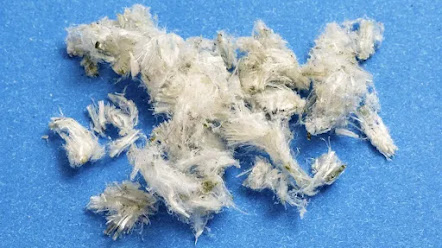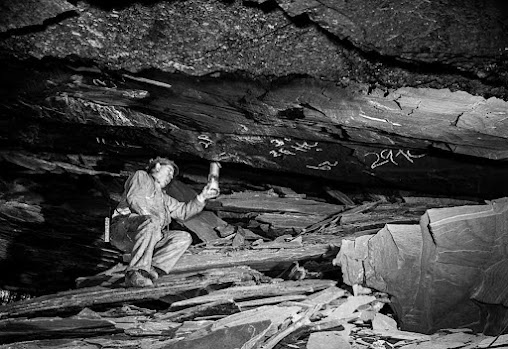I met Dr. Sam Laucks at the visitation before Dr. Eamonn Boyle’s funeral last summer. Some time later, my husband suggested that Sam might tell us his story.
As the regular readers know, in some of these stories, the protagonists have escaped from suffocating Fascist or Communist totalitarian regimes or from frightening civil wars and widespread famine. In others, young men and women have left their families behind and traveled halfway around the world in search of more education and work.
 |
| Dr. Laucks |
In fact, quiet Dr. Laucks wondered how he got to be, in his words, “so unbelievably lucky.”
Sam started out by telling me that he was “a local guy.” He was born at York Hospital in the mid-1950s. He was delivered, he knew, by Dr. Robert Farkas. In the US, the cost of the delivery and five-day hospital stay would have been less than $200 (about $1800 in today’s money) compared to about $20,000 today. (Times have changed, noted Sam–his daughter couldn’t recall the names of the obstetricians who delivered her two children just a few years ago, and she didn’t think that was unusual.)
Family and Early Life
His family has deep roots in York County, and he grew up about five minutes from the hospital. Sam said that he had a “very good childhood” and “supportive parents.” His attorney-father and his college-educated mother were both active in civic affairs. He considers himself fortunate to have grown up in these circumstances.
Early on at York Suburban High School (frequently rated top in the county), he knew he wanted to go into medicine, so he spent the last two years there trying to think about how to make this happen.
He is sure that several of his teachers paved the way for his success in college. At the top of the short list was his calculus teacher, Janis Snell. He recalled that she was very demanding and strict. Since math was never really Sam’s subject, and he was in a college-level class, he got a C–the only C he received in either junior or senior high.
But when he went to Ursinus College outside of Philadelphia (his father’s alma mater) as a premed Biology major, and most of his classmates struggled terribly in calculus, he breezed through with an A, and tutored his less well-prepared buddies.
 |
| Ursinus College Campus (Credit: Ursinus College) |
Medical School
Following Ursinus, he went to Thomas Jefferson Medical College. Though this originally wasn’t his first choice, it turned out to be the right place for him as the focus of the school was on the practical matters of actually being a physician, not a doctor who did research. He lived in Center City Philadelphia, and “it was fun.” And it was through his formative surgical rotation at the Catholic Mercy Fitzgerald Hospital in Darby (now affiliated with Drexel) that Sam met his wife, Jeanne, a nurse.
 |
| Mercy Fitzgerald Hospital in Darby (Credit: Delco.Today) |
York Hospital had just hired its first full-time program director of their surgical residency, the trauma surgeon Dr. Nikhilesh Agarwal. In the beginning, the training followed what might be considered the “apprenticeship” model. In this, one or more residents worked with a single attending surgeon for a while and dealt with a variety of cases as they came along. For example, there might be a few simple inguinal hernias followed by a routine, uncomplicated appendectomy, but the next patient could need the complex, lengthy so-called Whipple procedure for pancreatic cancer.
This “real life” experience eventually gave way to a schedule whereby trainees started with the easy stuff consistent with their new skills and gradually learned the advanced techniques for progressively more demanding procedures.
Dr. Laucks said that each approach to learning his craft has strengths and weaknesses, and he would not choose one over the other.
By his third or fourth year, one of the senior residents who was two years ahead of him mentioned the idea of specializing in the new field of dedicated colorectal surgery. Sam liked the concept and followed his colleague’s advice (and track) and did a one-year fellowship at the long-standing and well-regarded Ferguson Clinic in Grand Rapids, Michigan.
 |
| View of Grand Rapids, Michigan (Credit: HBMAGAZINE) |
He wanted to have a specialty, but didn’t want to give up general surgery, so when he came back to York, he joined William Shue’s solo general surgery practice. Having already worked with him as a resident, Sam thought very highly of Dr. Shue “as a surgeon and as a person.” Bill, noted Sam, cared about his patients, knew his own limitations, and had (that rare attribute of) “common sense.” His surgical outcomes were excellent, and he was “kind and generous.” The partnership worked out “wonderfully well,” noted Sam.
 |
| Dr. Shue |
The members of the group all settled into their niche of what they liked to do and what they did best. Dr. Laucks told me that he was “not a natural when it came to being a technician.” He soon recognized the critical importance of good judgment when it came to making decisions about surgery. As he said, “Not everybody needs an operation.” And the longer he was in practice, the more patients he turned down for surgery. He took the classic “First, Do No Harm” dictum very seriously.
Colorectal Cancer
As Dr. Laucks spent about two-thirds of his practice doing colorectal surgery (not counting colonoscopies), we talked a bit about colon cancer and the fact that while this has been mostly a disease of older age, it is now being diagnosed in younger people.
Colorectal cancer (CRC) is the third or fourth most commonly diagnosed cancer and the second most common cause of cancer-related death. About 10% are related to specific underlying genetic factors, while 90% are not, and are sporadic, and almost certainly related to environment and diet. It has been said that more than one-half of all cases and deaths are attributable to modifiable risk factors, such as smoking, an unhealthy diet, high alcohol consumption, physical inactivity, and excess body weight.
 |
| Risk Factors for Early-Onset Colorectal Cancer (Credit: Loyola Medicine) |
Regular screening is important, and it now seems that this should begin at age 45 instead of 50. Dr. Laucks still believes that routine colonoscopy (especially by an experienced, well-trained endoscopist) remains the best screening tool and is the gold standard. Not only are suspicious lesions identified, they are removed, and cancer is prevented. The at-home stool sample tests (including the FIT and Cologuard immunologic tests) are quite good and are getting better, but a colonoscopy is still needed if there are “positive” results (including those that are “false-positive”).
Screening imaging (including a tiny swallowed camera that slowly makes its way down the long tube that is the GI tract) is getting better at finding suspicious lesions. But, again, the expert endoscopist is needed to biopsy or remove the growths.
Since most CRCs grow slowly, being able to pick them up early, before they have spread, usually results in a cure. Because symptoms of the developing cancer are often lacking or nonspecific, regular screening is highly recommended.
You may ask, “Am I at risk for colorectal cancer?” I have read that one in fifteen men and one in eighteen women in the U.S. will be diagnosed with bowel cancer in their lifetime. The risk factors are complex and, as mentioned, include age, genetics, diet, and unclear environmental exposures. Suffice it to say that if you have a colon or a rectum, you are at risk.
Changes in Surgery
At this point, it should be noted that Sam’s practice of general surgery changed quite a bit over the decades. As a result of the remarkable advances in diagnostic imaging, his hard-won clinical skills of obtaining an accurate history and carefully examining the “acute abdomen” with his eyes, his ears, and his hands to determine if the belly needed to be opened have been made less relevant and nearly obsolete by CT and MRI (especially with the help of AI). Dr. Laucks freely admitted that “imaging is frequently better than the clinical exam.” But he agreed that the personal exam by the surgeon supplies important intangible benefits for the anxious patient that cannot be measured.
Sam also noted that minimally invasive surgical techniques developed during his career, including laparoscopic and so-called robotic surgery, reduced postoperative pain and recovery times for patients. The first laparoscopic colectomies were performed in 1991, and robotic surgery of the colon using the da Vinci device (overcoming some of the intrinsic limitations of laparoscopy) was initially reported in 2001.
 |
| Da Vinci Robotic-Assisted Surgery (Credit: Glasgow Colorectal Centre) |
Dr. Laucks retired from the practice of surgery nine years ago, at age 62, three years after his group, White Rose Surgical Associates, was folded into WellSpan Health. By then, he had already cut back his hours and his on-call responsibilities. Since then, he has been employed part-time at several WellSpan wound centers. He appreciates the expertise and support of the wound Care nurses whose hard work makes his job easy.
He and his wife give their daughter’s two young children their “full attention” three days a week. And, staying busy, Sam does an “array of little things.” He plays the French horn in several local bands, and he (like his father) joined the ancient Freemasons fraternal organization, where he enjoys the diversity of meeting people from all walks of life and different religious and political perspectives.
He said that he regularly reads The York Daily Record, The Washington Post, and The New York Times. He is saddened by the fact that widespread “bias and prejudice” are still very much with us, and not relegated to the distant past. He wondered why we don’t learn from history.
And, curiously, remarkably lucky Dr. Samuel Laucks, a semi-retired colorectal surgeon whose life story so far contains no major obstacles or mishaps or wrong turns, confesses that he is sometimes prone to complain “about the minor nuisances in life.” He even admits that while his benign grumbling is a bad habit, it can sometimes be (tongue-in-cheek) one of his “favorite pastimes.” Nevertheless, he noted, with true sincerity, that he is “grateful to have been so abundantly blessed with a wonderful family, wonderful friends, wonderful colleagues, and with a fulfilling personal life and a successful professional career.” No drama required.
Suggested Readings:
1. Cope, Zachary (revised by William Silen). Cope's Early Diagnosis of the Acute Abdomen, 21st Edition. Oxford. Oxford University Press, 2005. (Still essential reading, focusing on the history and physical examination of the patient with acute abdominal pain, but going beyond that.)
2. Pitiakoudis, Michail et al. "Artificial Intelligence in Colorectal Cancer Screening, Diagnosis and Treatment. A New Era." Current Oncology, 2021, 28, 1581–1607. (An in-depth article that I could not understand at all, whose conclusion is: "Computer-aided systems can provide physicians with assistance in detecting and diagnosing precancerous lesions or early-stage CRC. Several novel algorithms have shown promising results for the accurate detection and characterization of suspected lesions.")
3. Rex, Douglas et al. "Colorectal Cancer Screening: Recommendations for Physicians and Patients from the U.S. Multi-Society Task Force on Colorectal Cancer." American Journal of Gastrenterology, 2017 July; 112(7), 10161030. ("The first-tier tests are colonoscopy every 10 years and annual fecal immunochemical tests." Colonoscopy is offered first, and FIT should be offered to patients who decline colonoscopy.)
4. Zhang, Jiaxin et al."Colonoscopic screening is associated with reduced colorectal cancer incidence and mortality: a systematic review and meta-analysis." Journal of Cancer 2020; 11(20); 5953-5957. (Colonoscopy was associated with a 52% reduction in the incidence of CRC and a 62% reduction in mortality.)
By Anita Cherry 12/20/25
 |
| Two Tulips (stained glass by Anita) |
 |
| Volume 1 |
 |
| Volume 2 |









.jpg)
























.jpg)

